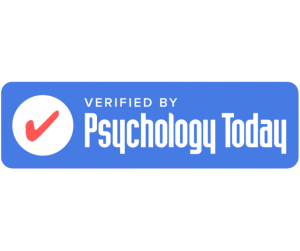If you’re wondering whether tramadol is an opioid, you aren’t alone.
Given the common misconception that tramadol isn’t addictive, it’s not unusual for people to believe it is not an opioid.
And yet, thousands of people each year end up in the emergency room because of tramadol abuse, and many more struggle with opioid addiction caused by tramadol use.
This article will answer all of your questions about tramadol and its use, including:
- What is Tramadol?
- Is Tramadol an Opioid?
- What Class of Drug is Tramadol?
- How Does Tramadol Act on Your Body?
What is Tramadol?
Tramadol is a prescription painkiller used to treat moderate and severe pain in cases where non-opioid pain medication can’t be used or isn’t effective enough.
Made by combining synthetic opioid medication with monoamine reuptake inhibitors (MRI), tramadol is fully human-made and thus falls under the category of synthetic opioids.
First synthesized in 1962 by Grünenthal GmbH, a German company, tramadol was only approved by the U.S. Food and Drug Administration (FDA) to be used for medical purposes in 1995.
Tramadol is less potent than most other opioid medications and was initially thought to be a safer, less addictive alternative to opioid analgesics.
However, since tramadol is an opioid, it can still lead to abuse and addiction, just like any other opioid medication. Because of this, it is not recommended to take tramadol for chronic pain management.
Forms of Tramadol
Tramadol is available in several forms, including:
- Tablets (chewable, immediate-release, and extended-release)
- Capsules (both immediate and extended-release)
- Solution
- Suspension
- Suppositories
Other Names For Tramadol
Tramadol is sold both under its generic name and different brand names. The most popular brand names under which tramadol is marketed include:
- ConZip®
- QDOLO®
- Ryzolt®
- Ultram®
- Ultram ER®
You might also hear tramadol being referred to by one of these street names:
- Chill pills
- Trammies
- Trams
- Ultras
Tramadol Usage in the US
Here are some statistics that will provide you with more context on the prevalence of tramadol in the United States:
- With nearly 17.5 million prescriptions, tramadol was the 35th most frequently prescribed drug in the United States in 2020.
- In 2021, tramadol was the fourth most commonly misused prescription painkiller by people over the age of 12 in the United States.
- In 2011, 40% of emergency department visits related to tramadol were linked to tramadol abuse or misuse.
- Between 2004 and 2020, the number of tramadol prescriptions in the United States doubled, increasing from just above 8.6 million to nearly 17.5 million.
Is Tramadol an Opioid?
The short answer to the question “Is tramadol an opioid?” is yes, tramadol is an opioid analgesic.
Since tramadol is produced by combining monoamine reuptake inhibitors (MRI) with synthetic opioids but doesn’t contain opiates (natural opioids), it is considered a synthetic opioid. Some other fully synthetic opioids include:
Since tramadol is an opioid, it produces similar effects to other opioid medications and can be addictive. For this reason, you should carefully follow the doctor’s instructions when taking it, as opioid abuse can significantly increase the risk of addiction.
What Class of Drug is Tramadol?
As mentioned previously, the FDA approved tramadol for medical use in the United States in 1995. Back then, it was a non-controlled analgesic, meaning doctors could prescribe it to patients for pain management with little to no limitations.
However, the Drug Enforcement Administration (DEA) classified tramadol as a Schedule IV controlled substance in 2014. This classification determines that tramadol carries a potential for abuse and addiction, albeit lower than that of opioids classified as Schedule II controlled substances.
Since tramadol is a controlled opioid, it requires a new prescription every six months, which can be refilled five times at most.
How Does Tramadol Act on Your Body?
Given that tramadol is an opioid, it acts similarly to other opioids.
More specifically, tramadol relieves moderate to severe pain by latching onto opioid receptors and blocking the pain signals from reaching the brain.
Tramadol also stimulates dopamine release. As such, it can also have a calming, euphoric effect on people similar to that of other opioids, which also increases its potential for abuse and addiction.
However, what makes it different from most other opioids is that it also contains monoamine reuptake inhibitors (MRI). Because of this, it also acts similarly to antidepressants.
While most people feel drowsy when taking tramadol, some experience elevated mood and an energy boost since it alters the reuptake of serotonin and norepinephrine.
That said, even though tramadol can make you feel energized and euphoric, it should always be used for its intended medical purpose—pain relief.
How Long Do Tramadol Effects Last?
The duration of tramadol effects depends on the type of tramadol you’re taking and certain individual factors, such as age and metabolic rate.
Usually, tramadol starts working within an hour of ingestion. Immediate-release tramadol typically alleviates pain for 4–6 hours, whereas the effects of the extended-release version usually last for 12–24 hours.
The half-life of tramadol is about six hours, which means that your body will clear out half a dose of tramadol within this period.
Nonetheless, tramadol can stay in your body and be detected by different drug tests for much longer than that, as it takes roughly five half-lives to fully eliminate the drug from your system.
Risks of Taking Tramadol
Even though tramadol was believed to be safer than other opioids, it is no different from them in terms of risks associated with its use.
In particular, tramadol can cause various side effects, including but not limited to:
- Confusion
- Constipation
- Diarrhea
- Drowsiness
- Hallucinations
- Headaches
- Lightheadedness
- Nausea
- Seizures
- Slowed breathing
- Vomiting
The risk of these side effects increases if you take tramadol for an extended period of time or abuse it (e.g., take a higher dose than prescribed, crush it before ingestion to enhance its effects, etc.).
Although tramadol is considered one of the weaker opioids, it still carries a risk of dependence and addiction.
Prolonged use of tramadol can lead to tolerance, which means you’ll need increasingly higher amounts of the drug to feel its effects. Not only can this cause you to develop an opioid use disorder (OUD), but it also puts you at risk of an opioid overdose, which can be fatal.
Symptoms of Tramadol Addiction
If you suspect that you or your loved one might be struggling with tramadol addiction, here are some symptoms you shouldn’t ignore:
- Being unable to control tramadol use
- Continuing to take tramadol despite its negative effects on personal and professional life
- Experiencing withdrawal symptoms, such as intense cravings and flu-like symptoms, after stopping or reducing tramadol use
- Feeling apathetic toward things that used to bring joy (hobbies, family, etc.)
- Gradually increasing tramadol dosage to achieve the desired effects
- Neglecting family and work responsibilities
- Trying to obtain tramadol in any possible way (doctor shopping, stealing, etc.)
If you recognize any of these symptoms in yourself or a loved one, take it as a warning sign but don’t attempt to quit tramadol on your own, as it can be potentially life-threatening.
By seeking professional help, you can minimize the risk of relapse and overdose and improve the chances of lifelong recovery.
ANR Treatment for Opioid Dependence
Getting off opioids such as tramadol might seem like an impossible feat, but not with Accelerated Neuro-Regulation (ANR)!
ANR is the safest, fastest, and most effective opioid dependence treatment you can opt for.
It is the only opioid addiction treatment that targets the underlying cause of opioid addiction, which is the chemical imbalance resulting in the brain from opioid use.
Since the ANR treatment re-regulates your endorphin-receptor system and restores your brain to its pre-addiction state, it enables you to forget about withdrawal symptoms and the risk of relapse.
Moreover, unlike traditional treatment methods, ANR allows you to recover from opioid addiction in a matter of days. The average length of the hospital stay for the ANR treatment is just 36 hours, within which you’ll be placed under the care of highly experienced medical professionals.
The ANR procedure is performed in an ICU setting of an accredited hospital and personalized to each patient individually, making it very safe, even for those with complex medical conditions.
If you’re looking to make a lifelong recovery from opioids, contact us today to book a free consultation!
Key Takeaways
If there’s one thing you should take away from this article, it’s that tramadol is an opioid.
Now, let’s briefly go over the key points we’ve covered:
- Tramadol is an opioid analgesic commonly prescribed to alleviate moderate to severe pain.
- Since tramadol is an opioid, it can be addictive and is thus classified as a Schedule IV controlled substance.
- Besides relieving pain, tramadol can also induce euphoria and, in some patients, enhance mood and boost energy.
- The main risks of taking tramadol include various side effects (such as headaches, seizures, and breathing difficulties), overdose, and addiction.
- ANR is the most effective opioid dependence treatment, as it negates the risk of relapse by restoring normal brain function.
Additional information:
How Long Do Opioids Stay in Your System?
Opioid Withdrawal Medication, Treatment & Side Effects







